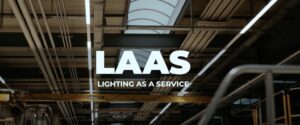Brazil’s LED Streetlight PPP Transformation: Case Analysis and Opportunities for Chinese Enterprises
Current State of Brazil’s Streetlight Market
Brazil is Latin America’s largest streetlight market. It boasts an estimated 18.5 million streetlights across urban and rural regions. But most of this infrastructure is old. Many cities still use high-pressure sodium or mercury vapor lamps. These technologies consume excessive energy and require frequent maintenance.
There is growing awareness of the benefits of LED streetlights. LED technology offers significant energy savings, reduced emissions, and lower maintenance costs. Despite these advantages, Brazil has been slow to adopt them. Financial constraints, high upfront costs, and bureaucratic hurdles have slowed modernization efforts.
To address these challenges, Public-Private Partnerships (PPPs) are gaining traction. The PPP model provides a way for municipalities to fund large-scale upgrades. This is done without relying entirely on public budgets.


The Need for Advanced Technology
Modernizing streetlights involves more than just switching to LEDs. Today, cities are focusing on creating “smart” lighting systems. These systems integrate advanced tools like street light controllers.
A street light controller automates lighting operations. It can adjust brightness based on traffic levels or ambient light. It can also monitor energy consumption in real time. These features reduce energy waste and operational costs.
Intelligent lighting is an important part of smart city initiatives. It increases urban safety and improves energy efficiency. It also supports environmental goals.
Minas Gerais PPP Case Study
Belo Horizonte’s LED Upgrade
Belo Horizonte, the capital of Minas Gerais, serves as a model for successful PPPs in Brazil. In a recent project, the city upgraded 20,000 streetlights. These were replaced with energy-efficient LED systems.
Street Light Controllers at Work
A key feature of this project was the integration of street light controllers. These controllers enabled automated dimming during off-peak hours. They also provided real-time data on each streetlight’s performance.
Energy Efficiency and Savings
The new system reduced electricity consumption significantly. It also minimized manual intervention in lighting maintenance.
Street Lighting Coverage in Major Brazilian Cities
| City | Population (2023) | Number of Street Lights | % LED Lights | % Photocontrol Systems | Annual Energy Consumption (MWh) |
| São Paulo | 12,400,000 | 620,000 | 85% | 75% | 240,000 |
| Rio de Janeiro | 6,800,000 | 420,000 | 78% | 68% | 165,000 |
| Brasília | 3,100,000 | 150,000 | 90% | 80% | 58,000 |
| Salvador | 2,900,000 | 140,000 | 70% | 60% | 52,000 |
| Fortaleza | 2,700,000 | 135,000 | 75% | 65% | 50,000 |
São Paulo Lighting Project Challenges
Bribery Scandal Impact
São Paulo aimed to modernize its streetlights. The project intended to replace millions of outdated lights. However, corruption disrupted progress.
A bribery scandal brought the initiative to a halt. Many streetlights remained untouched due to governance issues.
Key Takeaways
Transparency is crucial in large-scale PPP projects. Proper oversight can prevent delays and ensure successful implementation.
Case Study Analysis
What Makes PPPs Successful?
The success of PPPs lies in clearly defined roles and responsibilities. Municipalities provide regulatory oversight. On the other hand, private companies bring technical expertise and funding.
Advanced technologies, like street light controllers, are a critical component. These controllers ensure projects deliver measurable benefits, such as energy savings and improved maintenance efficiency.
Addressing Risks in PPPs
Large-scale projects come with risks. These include funding gaps, technical failures, and governance issues. These risks can be reduced by:
- Detailed Contracts: Clear agreements that outline expectations and penalties.
- Reliable Partners: Choosing companies with proven track records.
- Monitoring Tools: Using real-time data from street light controllers to track progress.
Strategy for Chinese Enterprises
Chinese enterprises have a significant opportunity to enter Brazil’s lighting market. The growing demand for energy-efficient solutions creates a favorable environment for innovation.
How to Enter the Market
- Offering advanced street light controller systems can set Chinese firms apart. These systems align with Brazil’s goals of energy efficiency and smart city development.
- Partner with Local Firms
Building partnerships with Brazilian companies is essential. Local firms understand the market dynamics and can help navigate regulatory processes. - Ensure Compliance
Brazil’s lighting market is governed by strict standards. For example, INMETRO certification is mandatory for all imported lighting products. Chinese enterprises must ensure their products meet these requirements. - Leverage Successful Case Studies
Examples like Belo Horizonte demonstrate the effectiveness of intelligent lighting systems. Replicating these models in other cities can lead to rapid adoption.
Future Opportunities
Urban Expansion and Smart Lighting
Brazil’s urban population is growing rapidly. This urbanization drives demand for modern infrastructure, including streetlights. Intelligent lighting solutions, featuring street light controllers, will play a pivotal role.


PPP Model Dominance
The PPP model is expected to dominate Brazil’s infrastructure projects. It provides a sustainable way to finance large-scale upgrades. Municipalities increasingly favor this approach due to its cost-effectiveness.
Role of Chinese Enterprises
Chinese companies are global leaders in lighting technologies. By focusing on compliance, innovation, and partnerships, they can capture a significant share of Brazil’s market.
Wrap Up!
Brazil’s streetlighting market is at a turning point. The PPP model is enabling large-scale upgrades. However, challenges like governance and funding remain.
Case studies like Belo Horizonte highlight the potential of modern technology. Street light controllers are central to these advancements.
Chinese enterprises can play a transformative role. By offering innovative solutions, they can support Brazil’s journey toward smarter cities.
The future is bright for Brazil’s street lighting sector. Intelligent solutions will continue to shape its success.
FAQs
Why are street light controllers important in Brazil’s PPP lighting projects?
Street light controllers automate operations, saving energy and reducing costs. They provide real-time monitoring, enabling quick fault detection and efficient maintenance. This technology helps meet energy-saving targets and ensures project efficiency.
What risks do PPP lighting projects face in Brazil?
PPP projects face financial, technical, and governance challenges. These include funding delays, implementation issues, and corruption risks. Strong planning, transparent oversight, and reliable partnerships can mitigate these challenges.
How can Chinese enterprises succeed in Brazil’s streetlighting market?
Chinese companies must comply with INMETRO standards, offer advanced technologies, and build local partnerships. Highlighting successful case studies can also build trust and encourage adoption of their solutions.
External link
https://www.investopedia.com/terms/p/public-private-partnerships.asp





